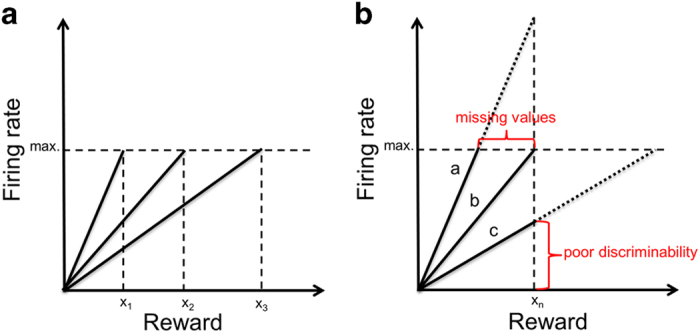Figure 1.

A simple model of efficient and inefficient adaptive coding. (a) A simple model of adaptive coding of reward. To efficiently encode all possible rewards with a limited coding range, the brain is dynamically adjusting the response sensitivity to the currently available rewards. This mechanism allows an optimal discrimination between different amounts of reward in any given context, enabling efficient processing of reward information. (b) Contrast of optimal and disturbed adaptive coding. This plot illustrates two potential consequences of inefficient adaptation of the coding range. Response function (a) is too steep, leading to a miscoding/incomplete representation of reward information. Response function (c) is too shallow, which leads to poor discriminability of reward due to a restricted coding range. Response function (b) shows optimal adaptive reward coding, where the slope of the response function adapts so as to represent the full range of reward.
